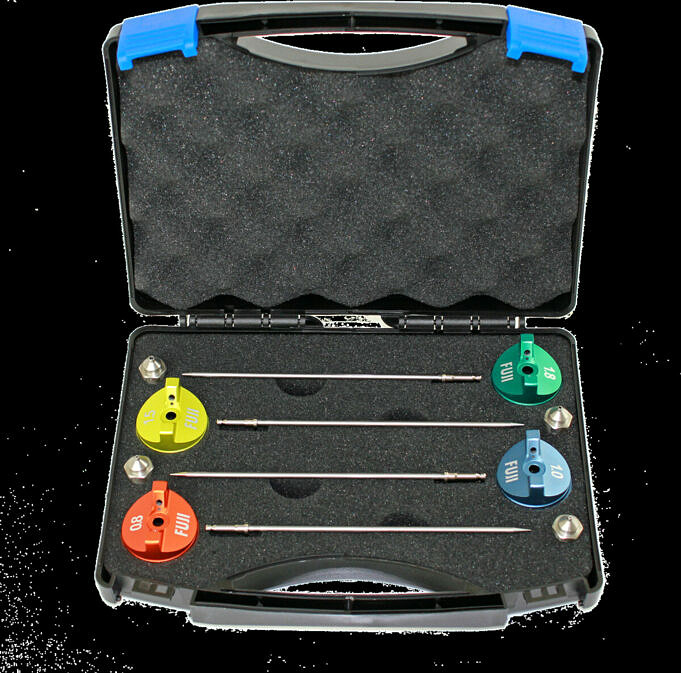I dont know where Id be if I hadnt decided to finish using a high volume, low pressure (HVLP) system. From a business standpoint, a high quality HVLP setup can be just as important as a good table saw. However, today I found out that Ive been killing my spray gun and I didnt even know it.
I have sprayed barrels with liquids through my guns. Shellac and lacquer are the most common, but I’ve also shot oil-base stain and I can recall one instance when I applied an oil/varnish combination to a cherry dining room table. I didn’t have time to apply the mixture. All these are solvent-base products, but I also spray water-base aniline dyes and did spray latex paint, once. That happened way back as I first discovered HVLP and since that one time, I have yet to blow paint through any of my guns again.
Im not a purist when it comes to cleaning my spray guns. I will leave the dye in the gun for up to two days. I have been known to let lacquer in the gun for several days. I’m not the only one. One cabinetmaker I know keeps his product in his gun for several weeks or even months. When I finish the dye process, I wash the gun with water and push a few ounces denatured alcohol through my pipes. Then I add a little lacquer thinner to the gun before I move on. When I finish up spraying shellac, its a spray or two of alcohol followed by lacquer thinner then the gun goes back on the shelf. This is the procedure I have used for many years. I believe alcohol encapsulates any water molecules left over. While that may be the case, I recently found out I am not doing enough.
Somewhere I read that water-base products turn to gunk in the gun , the technical term would be coagulate , and that causes issues when spraying. Although I haven’t seen any issues, I wanted to make sure. Apollo Sprayers International, Inc. was my first stop. I learned a trick that can save you a lot of time. John A. Darroch, CEO of the company, put it this way: Water-base materials do not coagulate inside spray guns. However, if you try to use lacquer thinner or paint thinner to clean them they certainly will. The chemical reaction between lacquer thinner and water-base material causes the water-base materials to become very sticky and gummy. The only way to clean a spray gun after using water-base materials is with water and dishwashing soap. Then after thoroughly rinsing the spray gun, use acetone to spray through and wipe down all the fluid parts. Acetone, which is the only other material that can be used to clean up water-base materials, is available at The Finishing Store. Acetone is a good medium to spray when using the same spray gun with both water-base and solvent-base materials as it dries completely without leaving a residue.
This tip is great and I’ll use it immediately. My spray gun will be grateful and I expect to see a marked improvement in my spray finishes. What do you spray most if you have HVLP or another type of spray capability? Are you happy with your results? Let me know if you still have a spray gun in your shop. Maybe we can get you and the spray gun back on speaking terms.



